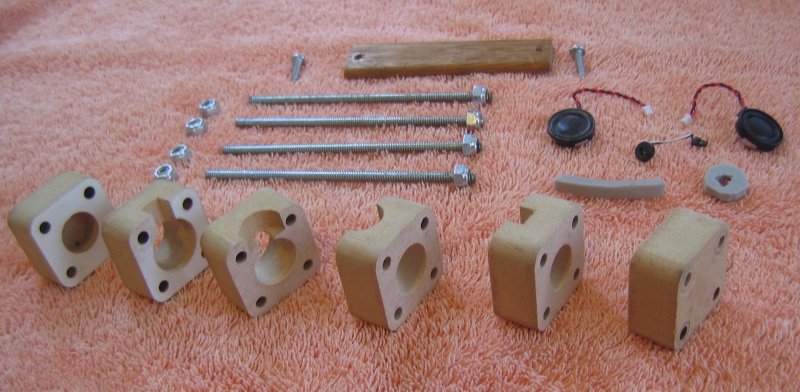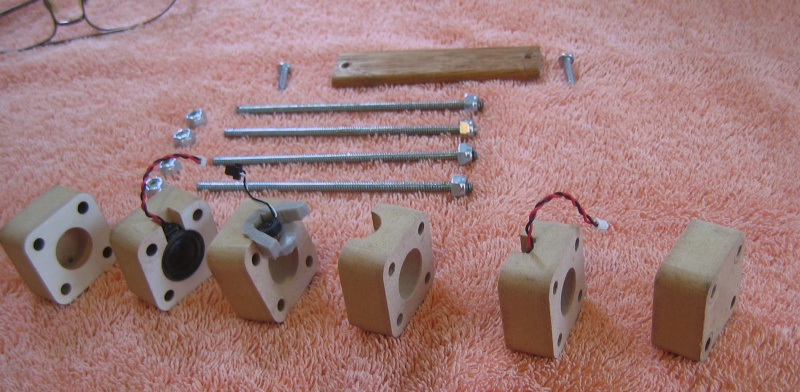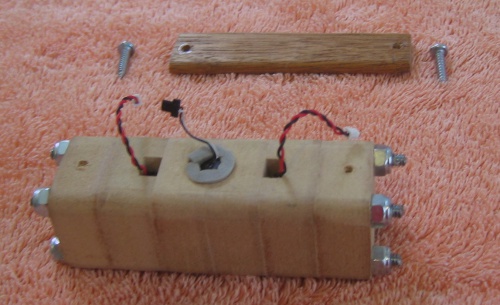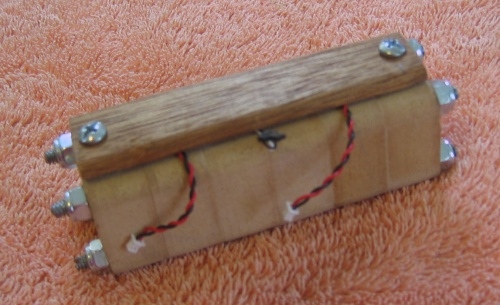Audio Test Fixture
The Audio Test Fixture is a gadget for speeding up the test process for XO-1.5 boards before they have been assembled into cases. It is an acoustic chamber containing two XO speakers and an XO microphone. They can be connected to the XO board so the firmware selftest code can generate test signals on the speakers and listen to them on the microphone. The fixture is made from MDF (medium density fiberboard), an acoustically "dead" material, thus isolating the interior acoustic chamber from the noisy factory environment.
Parts Kit
The shaped blocks were milled from 18 mm MDF (a leftover piece of shelf material from Home Depot) on a Taig Tools desktop CNC mill ( http://www.taigtools.com/cmill.html ), using a handcrafted GCode program. The MDF is clamped to the mill table with a couple of screws, then you press a button on the computer, come back later, and the set of pieces is made, requiring only light sanding to clean up the edges. The microphone mounting cutout requires a separate (short) milling run after the set of blocks is clamped together.
The hardest items to obtain were the long screws. I needed a 10-32 x 5" machine screw, but size is hard to find at hardware stores, and even online it is only available in large quantity lots like packs of 600. So I bought 10-32 threaded rod at the local hardware store and cut it to length.
For the next build, I am going to increase the hole size so a 1/4" bolt will fit. 1/4" bolts are easy to find in 4.5" and 5" lengths.
The dark-colored wood strip at the top of the picture is a piece of edge moulding.
The gray foam is 4 mm thickness weather stripping.
Speaker and Microphone Placement
The XO speaker fits snugly in a pocket as shown. The speaker diameter is 21 mm; the rear cavity behind it is 17 mm in diameter, extending through the speaker mount section and a further 9 mm into the end cap section. The rear cavity size was a educated guess; lacking T-S parameters for those speakers, an optimum cavity size was not easy to determine - and it probably doesn't matter much for this purpose anyway.
The microphone fits in a side cavity surrounded by soft foam. The foam decouples the mic from conducted outside sound that might be picked up by the enclosure. In practice, the foam and the microphone are inserted after the blocks have been bolted together. This photo just shows where it goes.
Nearly Complete ...
This is what it looks like with all the blocks bolted together.
Fully Assembled, With Strain Relief
The wooden strip provides strain relief for the wires. In practice, it will be necessary to lengthen those wires so they will reach the connectors on the board. The wiring is likely to be the most fragile part of the unit, so it's probably prudent to make the wiring harness replaceable for use on the manufacturing floor. I expect that Quanta's test engineers will figure something out.
There is an additional piece of foam - not shown - on top of the microphone element, so the mic is fully surrounded by foam.



